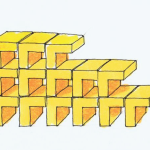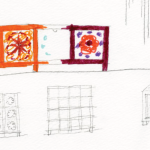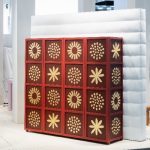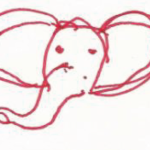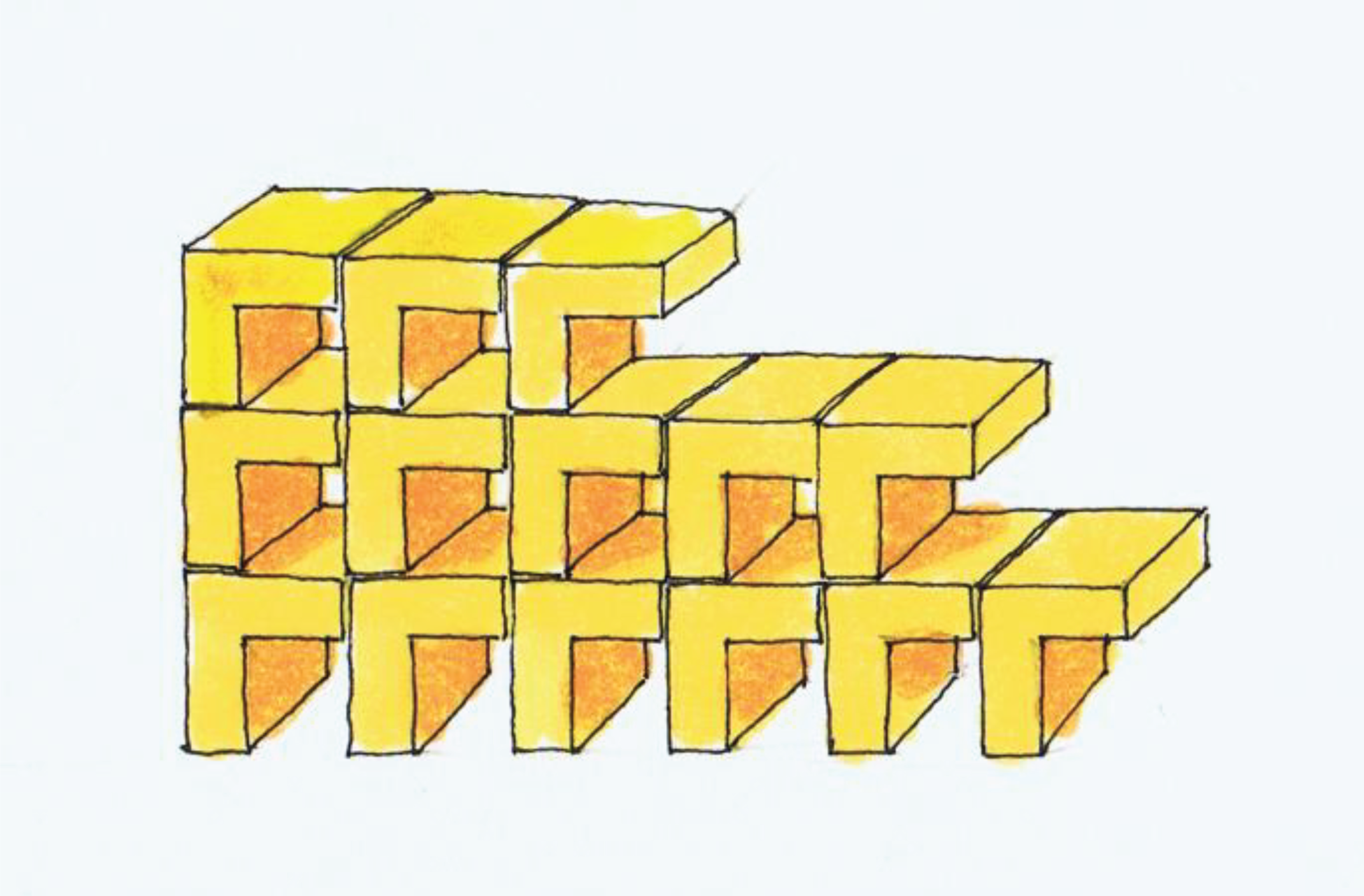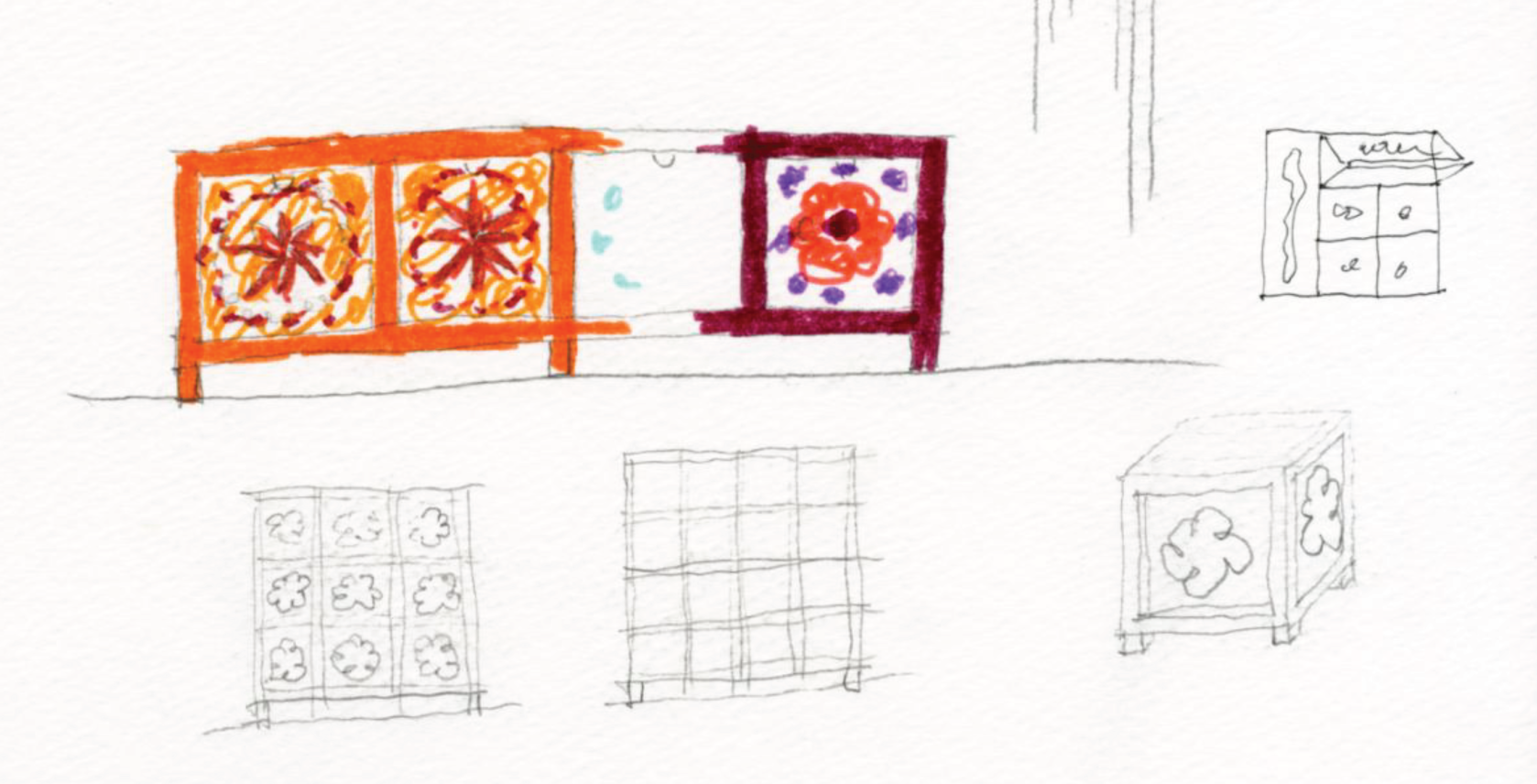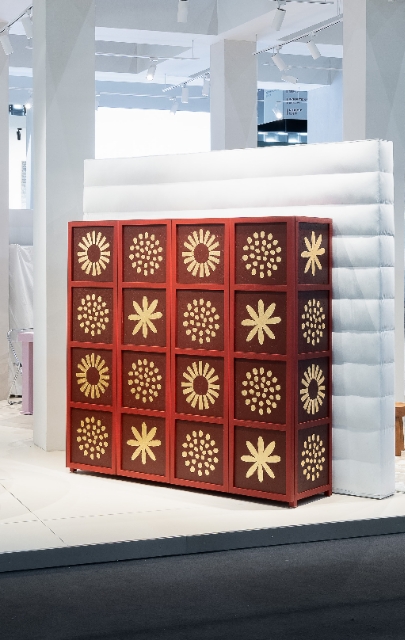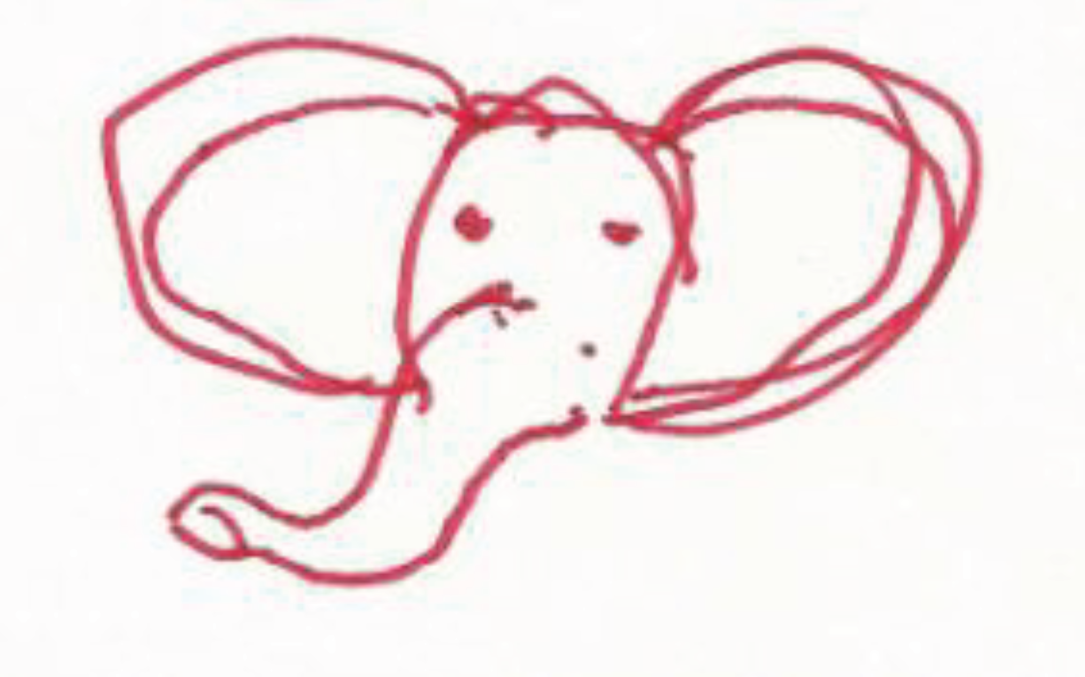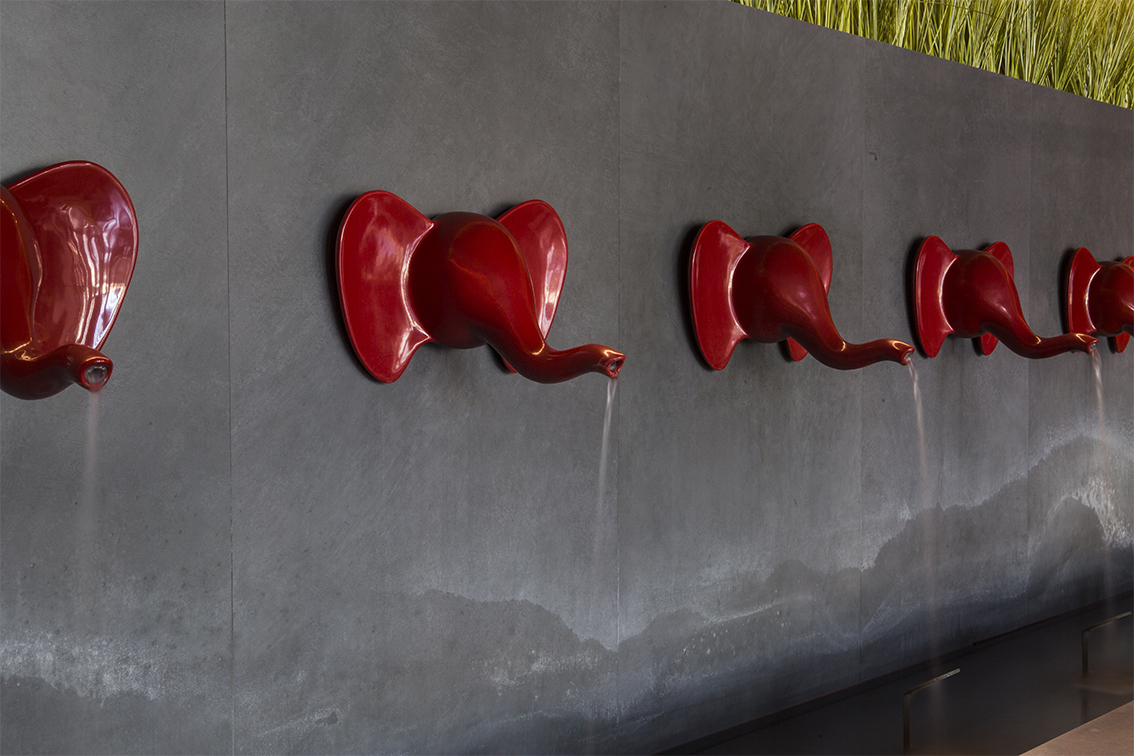Material_S: Masera & Guerriero’s Collaborative Project Explores Materials Innovation (Part I)
Focusing on materials exploration and experimentation, Material_S emphasizes the creative process and discoveries made therein. The project by Tommaso Masera will present one-of-a-kind works through select collaborations of extraordinary artists, designers, and companies at Design Dome, July 2022.
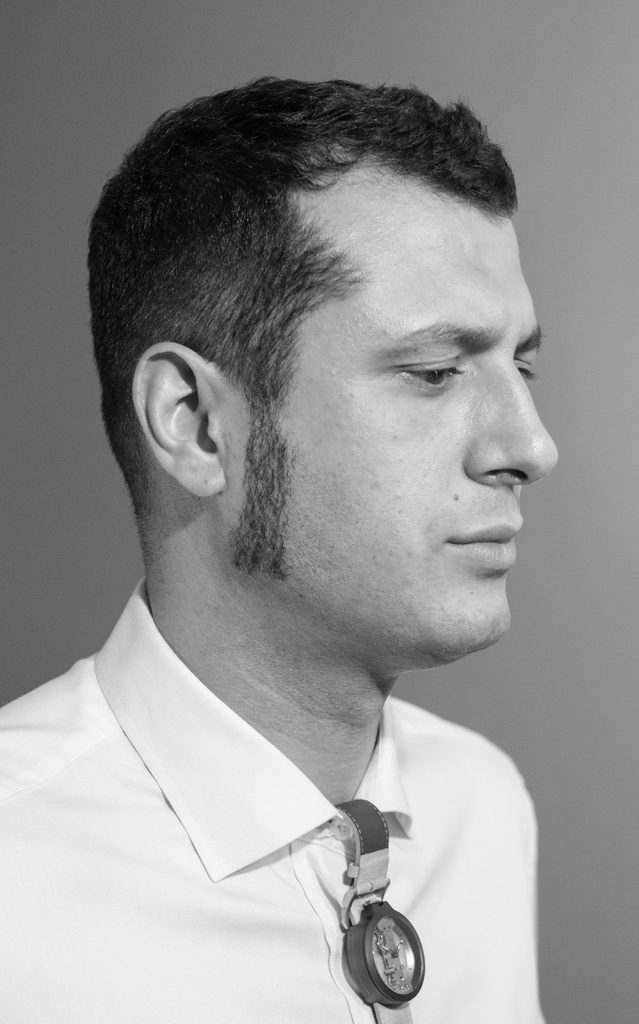
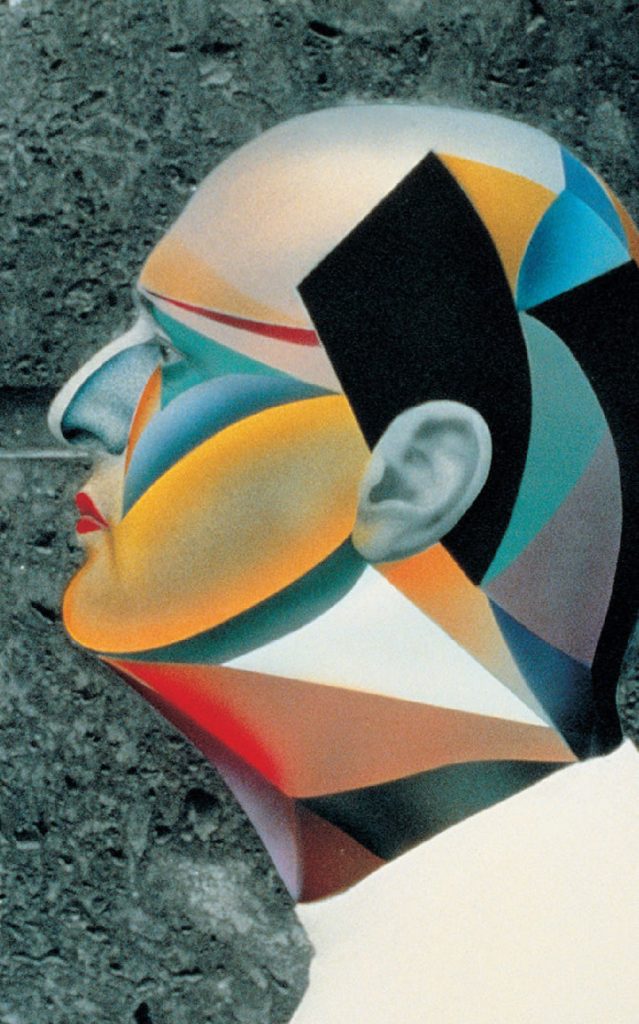
Tommaso Masera, Project Creator & Curator (left)
Alessandro Guerriero, Project Curator & Designer (right)
There are endless possibilities still undiscovered when it comes to materials and their applications in art and design, be it consumer products, public facilities, living spaces, installations, or any physical object. It takes continuous exploration and experimentation to test the limitations of each material and how far its boundaries can be pushed. In different hands, a particular material can take on various shapes, forms, and functions, revealing new varieties of application in industry.
It was the need to experiment with new ideas that inspired Italian industrial designer Tommaso Masera to create Material_S: an avant-garde collaborative project that, as the name suggests, focuses on materials. Masera handpicked a diverse group of the best designers, derived from different cultural backgrounds, fields of work, ages, and experiences. He then paired them up with the best materials manufacturers, with which they had no history of working.
“The idea of creating an eclectic workgroup, in which each designer could choose a material to experiment on and express themselves without any filter, is stimulating to me,” says Masera.


Tommaso Masera, Project Creator & Curator (left)
Alessandro Guerriero, Project Curator & Designer (right)
There are endless possibilities still undiscovered when it comes to materials and their applications in art and design, be it consumer products, public facilities, living spaces, installations, or any physical object. It takes continuous exploration and experimentation to test the limitations of each material and how far its boundaries can be pushed. In different hands, a particular material can take on various shapes, forms, and functions, revealing new varieties of application in industry.
It was the need to experiment with new ideas that inspired Italian industrial designer Tommaso Masera to create Material_S: an avant-garde collaborative project that, as the name suggests, focuses on materials. Masera handpicked a diverse group of the best designers, derived from different cultural backgrounds, fields of work, ages, and experiences. He then paired them up with the best materials manufacturers, with which they had no history of working.
“The idea of creating an eclectic workgroup, in which each designer could choose a material to experiment on and express themselves without any filter, is stimulating to me,” says Masera.
"The idea of creating an eclectic workgroup, in which each designer could choose a material to experiment on and express themselves without any filter, is stimulating to me."
Describing himself as an unconventional thinker who doesn’t like to follow design rules, Masera created the project with a simple instruction: to create objects or installations that could best express the material used, pushing the limits of the material in the process. Everything else is left to the designer’s discretion.
Masera, chief curator of Material_S, works with Italian design master Alessandro Guerriero, who co-founded Domus Academy in 1987. Also participating in the project as a designer, Guerriero shares Masera’s fascination with the concept of “group work” in design. “The conceptual result that a group produces is greater than the numerical sum of the individual contributions. This is the mystery, the miracle of the group that has always attracted and seduced me,” says Guerriero to Design Dome.
While he enjoys solitude, Guerriero takes inspiration from intimate experiences and has always worked in groups with many people in various settings. “It’s fascinating that people whose thoughts and ideas are most distant and different from each other can, in a precise moment, find themselves thinking and planning together,” he adds.
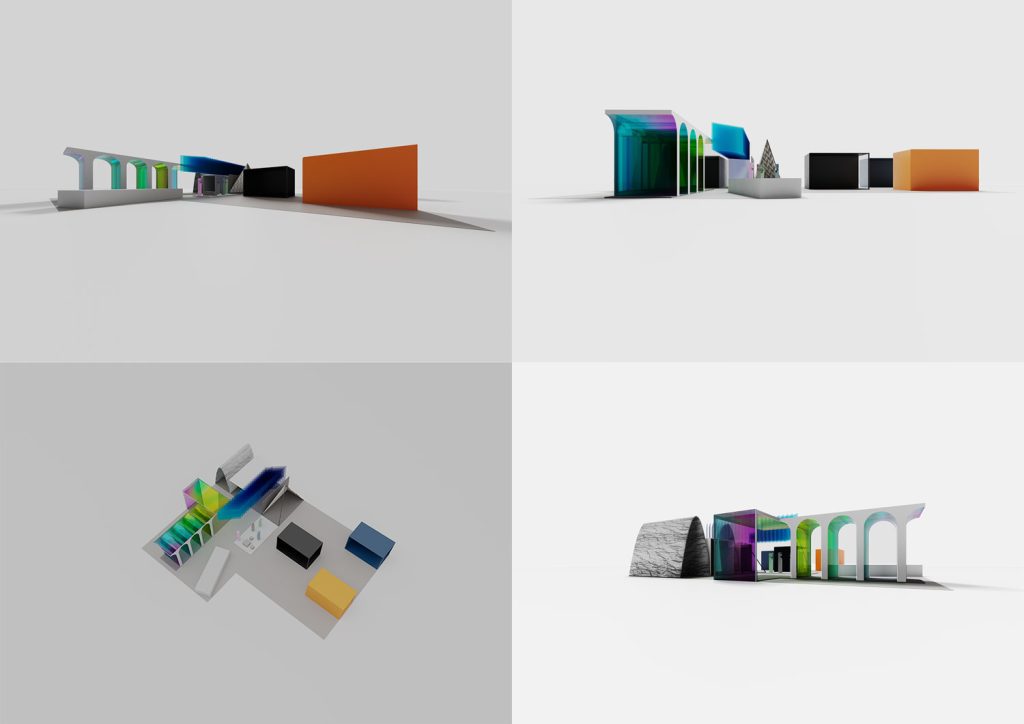

Describing himself as an unconventional thinker who doesn’t like to follow design rules, Masera created the project with a simple instruction: to create objects or installations that could best express the material used, pushing the limits of the material in the process. Everything else is left to the designer’s discretion.
Masera, chief curator of Material_S, works with Italian design master Alessandro Guerriero, who co-founded Domus Academy in 1987. Also participating in the project as a designer, Guerriero shares Masera’s fascination with the concept of “group work” in design. “The conceptual result that a group produces is greater than the numerical sum of the individual contributions. This is the mystery, the miracle of the group that has always attracted and seduced me,” says Guerriero to Design Dome.
While he enjoys solitude, Guerriero takes inspiration from intimate experiences and has always worked in groups with many people in various settings. “It’s fascinating that people whose thoughts and ideas are most distant and different from each other can, in a precise moment, find themselves thinking and planning together,” he adds.
The Material_S project consists of furniture and space; both serving merely as tools to show and enhance the materials and their characteristics. Designed by three design masters—Aldo Cibic, a founding member of Memphis Milano; Frank Jiang (Jiang Feng), chairman and chief designer of J&A Design; and Ben Wu (Wu Bin), one of the most high-profile interior designers in China; the themed spaces, or booths, will host the collaborations between designers and companies, as well as a collection of twenty-two vases created by various Italian artists. “[The space] is like a city where each building has its own identity, history, and personality,” says Masera.
In addition to Alessandro Guerriero, renowned artists and designers Giulio Iacchetti, Ryan LaBar, Liang Chen, Shi Tianyi, and Ye Fan are working with the best material companies to varying degrees, from material provision to planning and execution. These companies are DECO·DECO (resin panel), Sunbrella® (performance fabric), DuPontTM Tyvek® (high-density polyethylene fibers), STRONG DROP (recyclable French drop paper), Young Lion (contemporary and French neoclassical wooden furniture), Nanshuiyi Culture & Art Co., Ltd., (public art sculpture), ARTMEN (metalcraft technology), and Livintwist (contemporary furniture).
Through the first edition of Material_S, Tommaso Masera hopes to build a medium for designers from different generations and cultural backgrounds, where they can express themselves freely, exchange ideas, and engage in a dialogue to seek new solutions. “Material_S finds in materials the change for wide-ranging research works, the results of which will offer new varieties of visions and scenarios,” he says.
Aldo Cibic
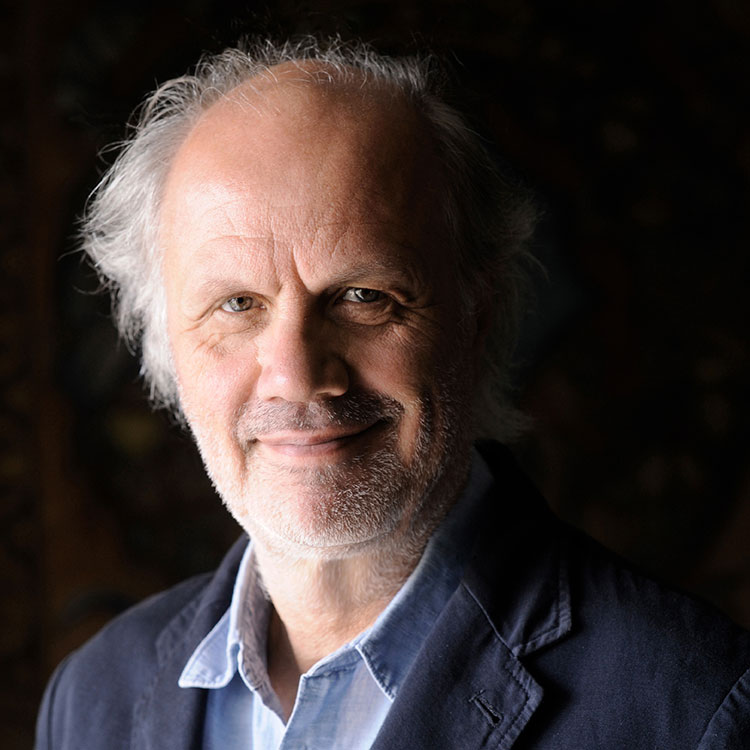
"We've become corrupted by formalism. We need to be more courageous, more radical."
Aldo Cibic has always been a courageous designer—he paved his own way toward design mastery, starting with decorating the house in which he lived with his father and brother as a teenager. A few years later, only twenty-two years old, he asked Ettore Sottsass for a job. They eventually became partners at Sottsass Associates, just one year before co-founding Memphis Milano.
“It was a big lesson for today, in my opinion, to walk in the unknown. We were quite scared,” says Cibic, describing his experience establishing Memphis back in 1981. “I was 26, and we found ourselves at the center of the world.”
The need for artists and designers to be more radical remains the same, according to the Tongji University distinguished professor, especially when it comes to respecting the environment. “In this historical moment, we have to be more radical in being respectful of the next generation and acting properly for our future,” he explains. “The world is trying to be more responsible, and I’d love for China to be an example of this.”
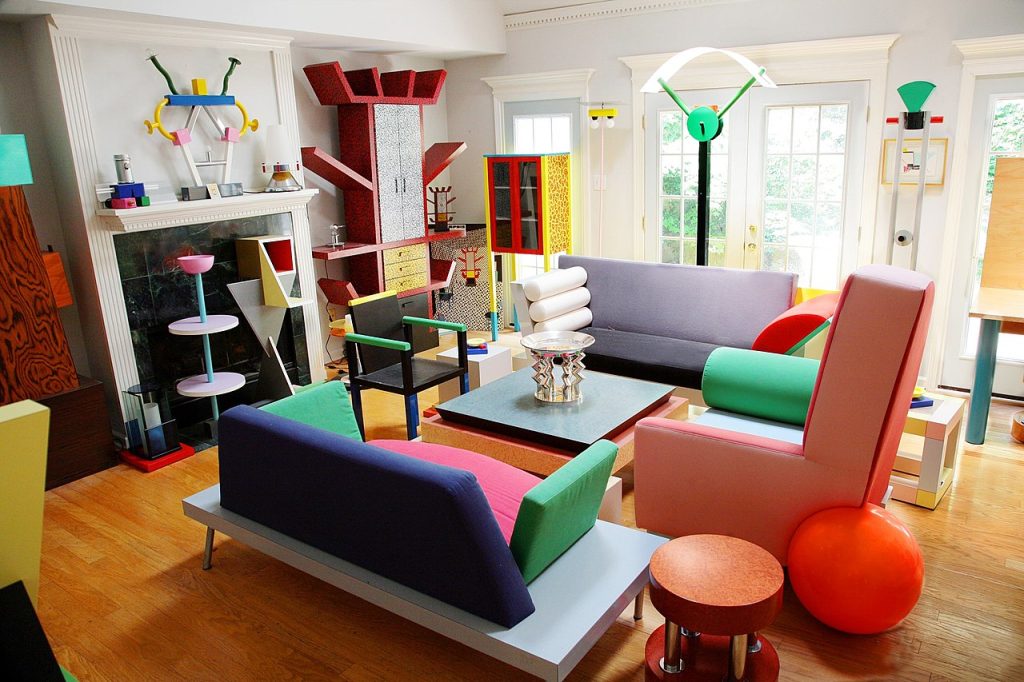
A collection of objects by the Memphis Group (Photo by Dennis Zanone)
Aldo Cibic has always been a courageous designer—he paved his own way toward design mastery, starting with decorating the house in which he lived with his father and brother as a teenager. A few years later, only twenty-two years old, he asked Ettore Sottsass for a job. They eventually became partners at Sottsass Associates, just one year before co-founding Memphis Milano.
“It was a big lesson for today, in my opinion, to walk in the unknown. We were quite scared,” says Cibic, describing his experience establishing Memphis back in 1981. “I was 26, and we found ourselves at the center of the world.”
The need for artists and designers to be more radical remains the same, according to the Tongji University distinguished professor, especially when it comes to respecting the environment. “In this historical moment, we have to be more radical in being respectful of the next generation and acting properly for our future,” he explains. “The world is trying to be more responsible, and I’d love for China to be an example of this.”

A collection of objects by the Memphis Group (Photo by Dennis Zanone)
China holds a special place for Cibic, who first came to Shanghai in 2003 out of curiosity. Now, having spent years going back and forth between Italy and China, he’s considering spending the rest of his life here. “People are curious and more optimistic than other places in the world. There’s really the desire of always making something new,” he says. “I’m not a foreigner doing Italian design here. I’m here to enjoy China’s culture and possibilities—and be useful for China. I’d love to be useful for China.”
Through his exhibition space design for Material_S, Cibic tries to convey his message for sustainability, building the space using reclaimed woods and stones from old buildings in Suzhou. He hopes that Material_S can “show the designers, companies, and everyone else that we have to become more respectful, intelligent, creative, and a great solution for not polluting the planet.”
By using materials from old houses, Cibic says, one can build their furniture without exploiting the environment, and he would like to set an example of that. “I hope that they love the idea that it’s made from something reclaimed and what they see [gives them] a little smile. I want to call it new-old. New design, with old materials. My new and old, together in China.”
China holds a special place for Cibic, who first came to Shanghai in 2003 out of curiosity. Now, having spent years going back and forth between Italy and China, he’s considering spending the rest of his life here. “People are curious and more optimistic than other places in the world. There’s really the desire of always making something new,” he says. “I’m not a foreigner doing Italian design here. I’m here to enjoy China’s culture and possibilities—and be useful for China. I’d love to be useful for China.”
Through his exhibition space design for Material_S, Cibic tries to convey his message for sustainability, building the space using reclaimed woods and stones from old buildings in Suzhou. He hopes that Material_S can “show the designers, companies, and everyone else that we have to become more respectful, intelligent, creative, and a great solution for not polluting the planet.”
By using materials from old houses, Cibic says, one can build their furniture without exploiting the environment, and he would like to set an example of that. “I hope that they love the idea that it’s made from something reclaimed and what they see [gives them] a little smile. I want to call it new-old. New design, with old materials. My new and old, together in China.”
Alessandro Guerriero

"The spirit of Alchimia is the belief that aesthetic work plays an important role in human spirituality."
In today’s world, where designers’ gaze tends to be colder and more pragmatic, Alessandro Guerriero would like for everyone to head toward utopia, the direction he believes in and the mindset behind the creation of Studio Alchimia in 1976. Studio Alchimia marked the beginning of the radical 1980s design era, and still today remains one of the most influential collectives with numerous important works from masters such as Andrea Branzi, Alessandro Mendini, Michele de Lucchi, and Ettore Sottsass.
“Those who work in the ‘Alchimia’ way look to art as the soul of the contemporary trying to imagine something far away, protected from social aggression and from the reduction of expression to [only] technique,” says Guerriero. The spirit of Alchimia, as he further explains, “is the belief that aesthetic work plays an important role in human spirituality.”
Guerriero, who curates Material_S with Tommaso Masera, will also be showcasing his own project at the Design Dome exhibition. He partners with DECO·DECO, a Guangzhou-based resin panel manufacturer that focuses on sustainable solutions.
Using DECO·DECO’s colored translucent resin panels, Alessandro Guerriero is creating two monolithic but visually lightweight furniture pieces—defined by neither the shape nor the function, but the properties of the material. The creation process allows each panel to imbue the objects with its colors, translucency, shades, and finishes, at the same time stripping them of other defining elements.
“The operation was, therefore, to ‘remove’ the shape of the object; which is no longer defined by its geometry, but rather by the material,” he explains.

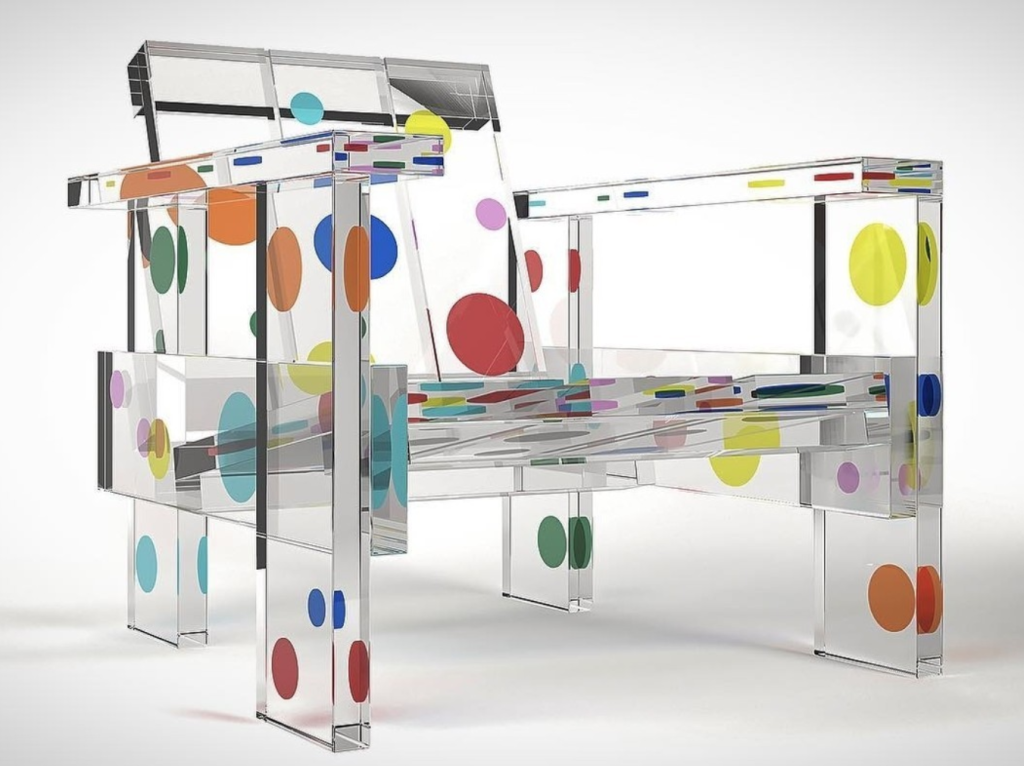
Objects by Alchimia (top), Pois Crate Chair Model by Alessandro Guerriero (bottom)
In today’s world, where designers’ gaze tends to be colder and more pragmatic, Alessandro Guerriero would like for everyone to head toward utopia, the direction he believes in and the mindset behind the creation of Studio Alchimia in 1976. Studio Alchimia marked the beginning of the radical 1980s design era, and still today remains one of the most influential collectives with numerous important works from masters such as Andrea Branzi, Alessandro Mendini, Michele de Lucchi, and Ettore Sottsass.
“Those who work in the ‘Alchimia’ way look to art as the soul of the contemporary trying to imagine something far away, protected from social aggression and from the reduction of expression to [only] technique,” says Guerriero. The spirit of Alchimia, as he further explains, “is the belief that aesthetic work plays an important role in human spirituality.”
Guerriero, who curates Material_S with Tommaso Masera, will also be showcasing his own project at the Design Dome exhibition. He partners with DECO·DECO, a Guangzhou-based resin panel manufacturer that focuses on sustainable solutions.


Objects by Alchimia (top), Pois Crate Chair Model by Alessandro Guerriero (bottom)
Using DECO·DECO’s colored translucent resin panels, Alessandro Guerriero is creating two monolithic but visually lightweight furniture pieces—defined by neither the shape nor the function, but the properties of the material. The creation process allows each panel to imbue the objects with its colors, translucency, shades, and finishes, at the same time stripping them of other defining elements.
“The operation was, therefore, to ‘remove’ the shape of the object; which is no longer defined by its geometry, but rather by the material,” he explains.
Ryan LaBar

"I hope that people seeing my [Material_S] piece will engage in such a way that they become an artist themselves."
Ask Ryan LaBar anything about ceramics, and he will answer your questions without skipping a beat. From the types to the characteristics and behaviors of each—like the high super plasticity of those found in China’s City of Porcelain Jingdezhen, where he is based—LaBar knows his ceramics like an old friend. And just like learning new things about an old friend, LaBar is exploring a way of working with the material that is different from what he is used to. With Young Lion, a French neoclassical style wooden furniture manufacturer, the abstract ceramic artist is entering the field of functional furniture, merging his clay with the wood to design a unique cabinet.
Building on the concept of a cityscape with the society living in it, his cabinet design involves movable LED-lit porcelain pieces (resembling those of a chess game) and an infinity mirror. While excited to see how it all comes together in the end, LaBar admits that so many things about this project are new to him: experimenting with the translucency of the material, the finish required to get the lights to work, and conjoining clay with wood.
“But that is why this project is very important to me,” he explains, “those different relationships forming with other materials, different ideas—it’s important to me as an artist. Because sometimes you get stuck with the same routine, unable to break free from that routine. This is an opportunity for me to do that. It’s like new wood in the fire.”
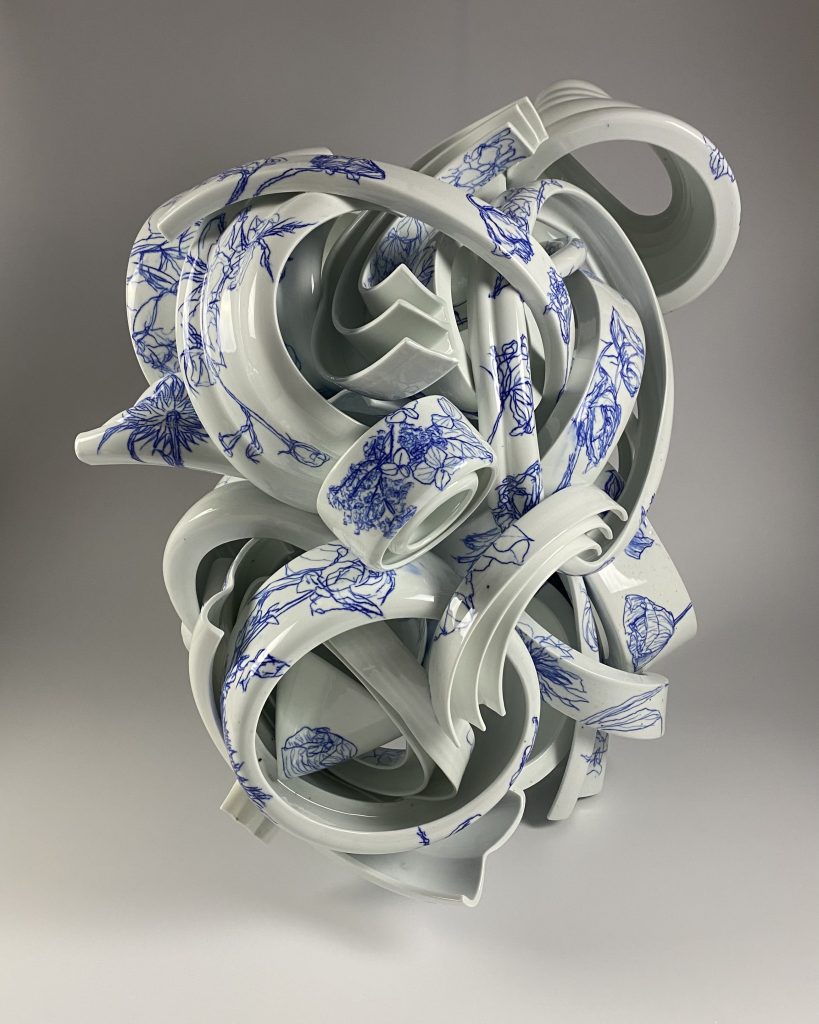

Sculpture by Ryan LaBar (left), LaBar working on a sculpture (right)
Another thing he is excited about is witnessing the hands-on interaction. As a sculptor with captivating yet delicate artworks, he is used to people keeping a distance from his pieces.
“Most of the time, I’d say sit back and look, don’t touch. It’s fragile. You’d see this wide-eyed curiosity—what is this, how did this happen, how did these pieces come together. I love watching that level of interaction, but it’s distanced from the work, it’s separated, it’s a visual interaction. This one is going to be more of a hands-on interaction, and that, I’m excited to see,” says LaBar.
Realizing that there will always be personal stories and experiences at play when interacting with and interpreting an artist’s work, LaBar has long since stopped holding high expectations regarding the audience’s experience and interpretation. However, he believes that art should empower the viewer, and he does hope that people seeing his Material_S piece will engage “in such a way that they become an artist themselves.”


Sculpture by Ryan LaBar (left), LaBar working on a sculpture (right)
Another thing he is excited about is witnessing the hands-on interaction. As a sculptor with captivating yet delicate artworks, he is used to people keeping a distance from his pieces.
“Most of the time, I’d say sit back and look, don’t touch. It’s fragile. You’d see this wide-eyed curiosity—what is this, how did this happen, how did these pieces come together. I love watching that level of interaction, but it’s distanced from the work, it’s separated, it’s a visual interaction. This one is going to be more of a hands-on interaction, and that, I’m excited to see,” says LaBar.
“If there’s a level of interactivity that encourages this sort of creative space, then that level of empowerment has been granted, and that expectation is as much as I have: that I empower the viewer to have a creative experience through this sort of utility of playing with composition,” he says.
Realizing that there will always be personal stories and experiences at play when interacting with and interpreting an artist’s work, LaBar has long since stopped holding high expectations regarding the audience’s experience and interpretation. However, he believes that art should empower the viewer, and he does hope that people seeing his Material_S piece will engage “in such a way that they become an artist themselves.”
“If there’s a level of interactivity that encourages this sort of creative space, then that level of empowerment has been granted, and that expectation is as much as I have: that I empower the viewer to have a creative experience through this sort of utility of playing with composition,” he says.
Giulio Iacchetti
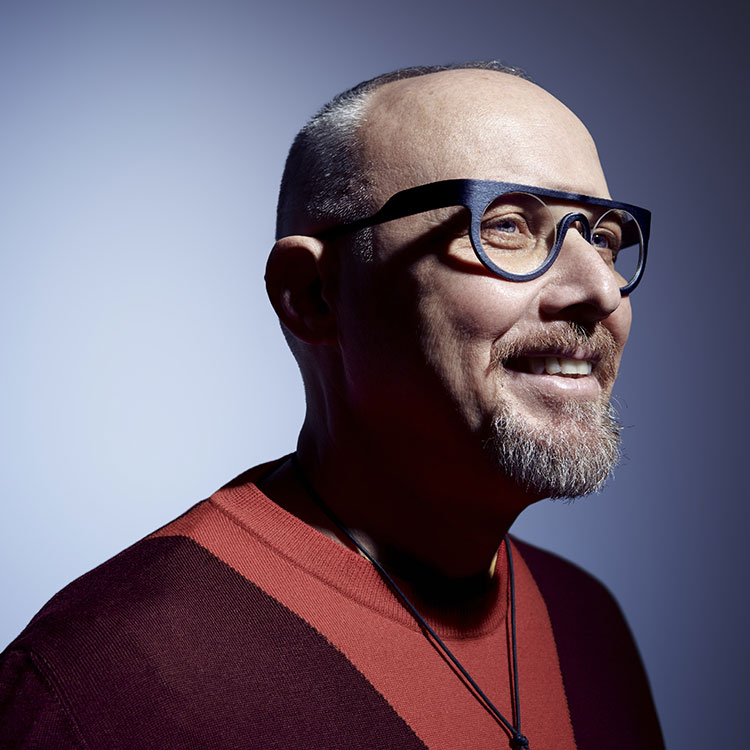
For a designer, it is essential to allocate some of [their] time for experimentation, and Material_S represents exactly this precious possibility.
Giulio Iacchetti fell into design almost by chance at the age of twenty-five, through an Industrial Design evening school in which he enrolled amidst his lack of motivation studying Architecture.
Today, Iacchetti is distinctively known for research and the creation of new categories of objects, a reputation he believes he gained by virtue of his observant and tremendously curious nature. He has earned multiple awards and achievements over the years, including two Compasso d’Oro and the Premio dei Premi, and certainly appreciates them—although his energy and pride lie in the present moment.
“The prizes, when they arrive, are the confirmation of the accuracy of a path taken. For me, they [prizes] are episodes, albeit pleasant, that belong to the past,” he explains. “My real pride are the ongoing projects, the new relationships that are born with companies and brands, the great emotion of starting a new creative path and immersing yourself in realizing new productions that require your involvement.”
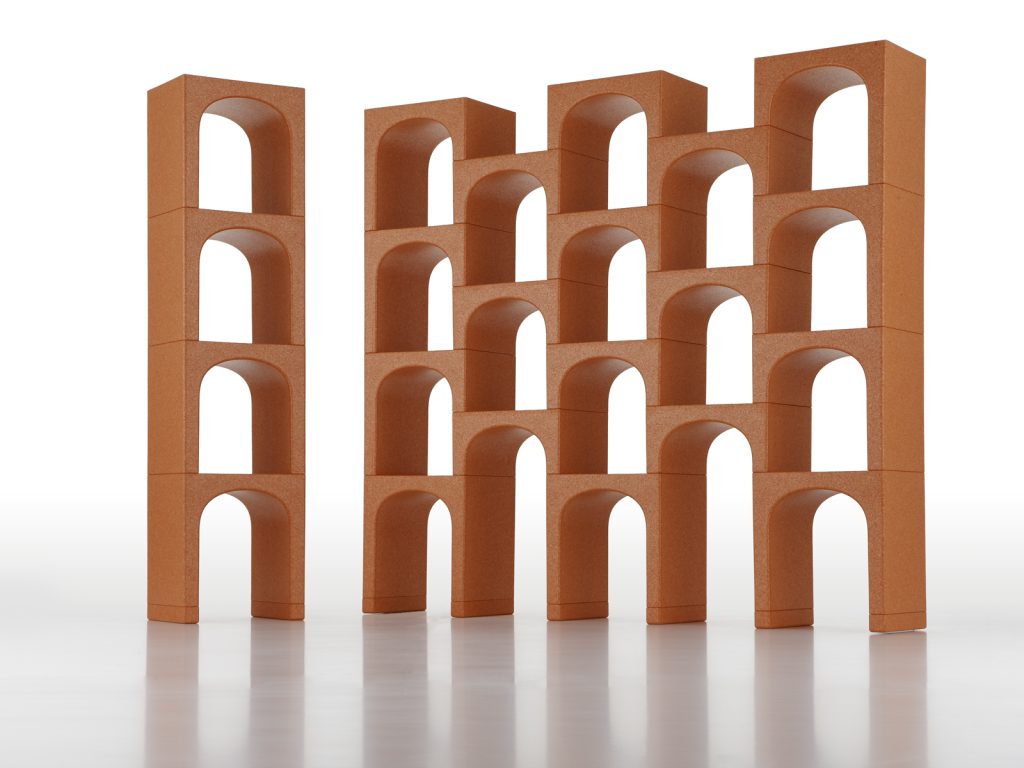
EUR by Giulio Iacchetti for Magis
Giulio Iacchetti fell into design almost by chance at the age of twenty-five, through an Industrial Design evening school in which he enrolled amidst his lack of motivation studying Architecture.
Today, Iacchetti is distinctively known for research and the creation of new categories of objects, a reputation he believes he gained by virtue of his observant and tremendously curious nature. He has earned multiple awards and achievements over the years, including two Compasso d’Oro and the Premio dei Premi, and certainly appreciates them—although his energy and pride lie in the present moment.

EUR by Giulio Iacchetti for Magis
“The prizes, when they arrive, are the confirmation of the accuracy of a path taken. For me, they [prizes] are episodes, albeit pleasant, that belong to the past,” he explains. “My real pride are the ongoing projects, the new relationships that are born with companies and brands, the great emotion of starting a new creative path and immersing yourself in realizing new productions that require your involvement.”

Affi by Giulio Iacchetti for Internoitaliano
One of his ongoing projects is his Material_S collaboration with Procédés Chénel, which he sees as an opportunity to experiment with new materials, object types, and realities of production and industry. “For a designer, it is essential to allocate some of [their] time for experimentation, and Material_S represents exactly this precious possibility,” says Iacchetti.
With Procédés Chénel’s paper materials, which he describes as “papers as precious as fabric,” Iacchetti is creating a family of light, removable, and delightful storage furniture, such as wardrobes and sideboards. The furniture pieces take design elements of a dress, using buttons and zippers as closures.
The design, according to Iacchetti, will make everything “fluid” and make the audience feel that things can change, just as humans can. “Research work in the field of design always represents a powerful suggestion for visitors to demonstrate that it is always possible to find new solutions, to question what seems confirmed and irreversible,” he says.

Affi by Giulio Iacchetti for Internoitaliano
One of his ongoing projects is his Material_S collaboration with Procédés Chénel, which he sees as an opportunity to experiment with new materials, object types, and realities of production and industry. “For a designer, it is essential to allocate some of [their] time for experimentation, and Material_S represents exactly this precious possibility,” says Iacchetti.
With Procédés Chénel’s paper materials, which he describes as “papers as precious as fabric,” Iacchetti is creating a family of light, removable, and delightful storage furniture, such as wardrobes and sideboards. The furniture pieces take design elements of a dress, using buttons and zippers as closures.
The design, according to Iacchetti, will make everything “fluid” and make the audience feel that things can change, just as humans can. “Research work in the field of design always represents a powerful suggestion for visitors to demonstrate that it is always possible to find new solutions, to question what seems confirmed and irreversible,” he says.

